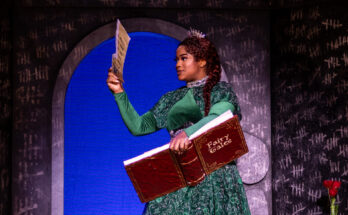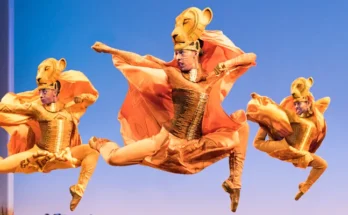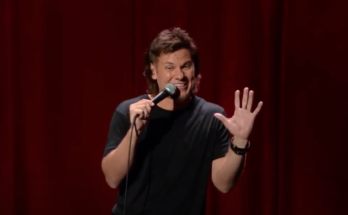By Kristi Casey Sanders
When the time came to cast the Broadway production of Sweeney Todd, people literally wheeled into the audition room with shopping carts full of musical instruments. The earlier 2004 London revival, re-orchestrated by Sarah Travis and directed by John Doyle, had turned the 1979 Sondheim musical on its head, creating an orchestra from the actors on stage. So when the musical transitioned to Broadway, the entire show had to be recast, so orchestral assignments were up for grabs. Auditioning actors carted in whatever instruments they could play, hoping versatility would give them a better chance of being cast.
Andy Einhorn, musical director of Sweeney Todd’s national tour, says, “I had friends who went in to audition for the show, and [the audition panel] would say, ‘What would you like to get out of the way first?’ There are stories of people [who] would just go through five or six instruments, and also sing and perform.”
Out of those New York auditions, Einhorn says, a template of musical assignments was created, making it easier to cast replacements because the instrument combinations were set. “The female ingénue is playing the cello, and the young romantic lead is playing the cello. The kid who plays Tobias plays the violin; that makes a lot of sense because the violin is a youthful instrument and he’s supposed to be the youngest member of the company. The beggar woman plays the clarinet [which] has more of a mournful sound that echoes the story that she’s trying to tell. The judge plays the trumpet – sort of a hard-lined sound, and sinister in nature.”
As musical director, Einhorn is responsible for leading rehearsals during the tour to make sure the actors keep the show fresh and en pointe, both as singers and musicians. “It’s been a fascinating experience to watch the show several times a week,” Einhorn says. “You’re taking two very different disciplines: You’re taking acting [where] the performers are always encouraged to have a lot of freedom, and then you’re taking music, which is a much more strict discipline because, obviously, you can’t just decide to add a beat here and there or take out a beat if you’d like to because other people are playing with you. I think the trick of this job is finding that balance to really allow the actors to feel like they are able to create the show as it is happening every night, but also to make sure it does stay in line with what’s written on the page.”
No matter how long the show is on the road, Einhorn says, discoveries are continual. And the fact that the actors not only communicate through character, but also through music creates a richer web of experience both for the actors and the audience. “I love to explain it to people,” Einhorn says. “A lot of that communication is so subtle, that you will get to see a head nod from somebody or a breath before they start to play or sing. And in that breath, everybody, on each note, knows we’re about to start something. There is really such an energy flow.
“The fact that the [instruments] match up with the character that they’re playing helps make the emotional connection between the story and the music so much more vivid and visceral for the audience members.”
Einhorn likens the show to a living puzzle. “The fact that we get from the beginning of this show to the end of this show is really a remarkable feat. It’s an incredible theatrical experience. It’s such an ensemble piece. Everybody is onstage, pulling their weight, and it takes 10 people’s intense concentration to make it work effectively every night. The cast is remarkable, and they pull it off.”
Einhorn’s great hope for the show is that the actor/musician element brings the audience in closer to the story of Sweeney Todd , so that it becomes even more gruesome and chilling. “There [are] some lyrics in the final ballad that say, ‘Isn’t that Sweeney there beside you?'” Einhorn hopes that, after living through the show, you give that person next to you a second, wary look.
Sweeney Todd plays The Fabulous Fox Theatre May 27-June 1.



